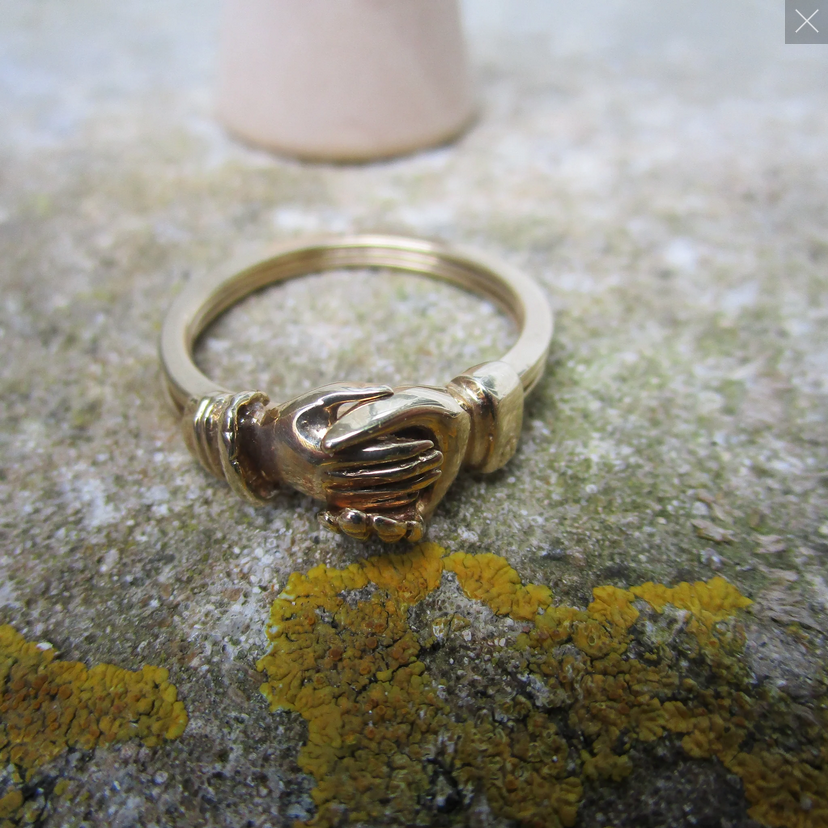Fede Rings: A Handshake with History

Before diamonds dazzled on engagement fingers, couples sealed their promises with something far more symbolic – the fede ring. From the Latin fides (faith), these rings feature two clasped hands, sometimes crowned with a heart, as a gesture of trust and loyalty.
Ancient Rome (3rd–4th century AD) saw the earliest examples, often in bronze or gold, exchanged as tokens of betrothal. By Medieval Europe (9th–15th century), fede rings were all the rage, especially in Italy and France, becoming the go-to symbol of marriage vows. During the Renaissance (15th–17th century), designs grew more ornate, sometimes combined with hearts or crowns – the precursors to Ireland’s famous Claddagh ring of the 17th century.
Today, fede rings are a reminder that love isn’t only glitter – it’s also grip. A timeless emblem of faith, fidelity, and the kind of promise you don’t need a receipt for.
This one opens up and a heart is concealed behind the hands.
Leave a comment
Comments will be approved before showing up.



